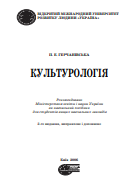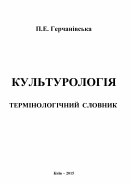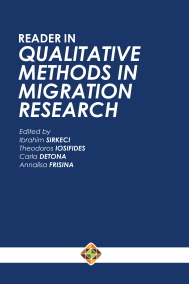Author(s): Mirjana Pavlović / Language(s): Serbian
Since in our opinion ethnic identity is an important problem in the study of the complex issues of assimilation and ethnicity, we have tried to determine to what extent and why the Serbian emigrants in Chicago have preserved their ethnic identity and what have been the forms and factors of its manifestation in the multinational environment of Chicago. As little attention has been paid to this problem so far, we collected the most important data during the field research by combining participatory observation, interviewing and casual conversation, although we also used all the available literature, statistical sources (census, etc.) and the emigrants’ publications (newspapers, commemorative volumes, calendars, bulletins, etc.). The Serbian emigrations to Chicago have had all the characteristics of the emigrations of other Yugoslav nations to America. They began at the turn of the 19th and 20th centuries, and they have been taking place with changing intensity ever since. Therefore this paper covers three generations of Serbian emigrants. There have been three waves of emigration, differing in the region, time and cause of emigration and the socioeconomic characteristics of the emigrants. The first-wave emigrants had come to Chicago until World War Two for economic reasons, and they were mostly from Lika, Bosnia-Herzegovina and Montenegro; only at the end of this and in the subsequent waves was there a large number of emigrants from Serbia. Most of them under-educated or even illiterate and without knowledge of the English language, they usually found employment as factory workers or poorly paid laborers. The second wave consisted of emigrants who came after World War Two, mostly until 1960, as political emigres or displaced persons. The third wave, consisting of economic emigrants, began in 1960 and is not yet over. The socioeconomic status of the emigrants of the last two waves has been much more favorable because of a greater share of skilled workers. (The third wave has also been characterized by a much higher proportion of highly Skilled workers.) Since now they are coming to Chicago with professional experience, as soon as they learn the language, they begin to advance. On coming to Chicago, the first emigrants were faced with a new environment whose language, customs and habits were something altogether new to them. Besides, their adaptation to the new conditions of life was often accompanied by intolerance on the part of the members of groups which had emigrated earlier and by the unhospitability of American society. Therefore the old emigrants founded their colonies and institutions (parishes, relief societies, Serbian schools, choirs, e ts ...) in poor districts of the city. The emigrants of the subsequent waves, especially the third, usually settled in colonies whose breakup began at the time of their coming to Chicago, but they remained active in the old emigrant organizations or founded new ones, more suited to their needs. The emigrants’ families and organizations have formed an emigrant community, to an extent isolated from the rest of American society, in which our emigrants are still largely leading their private and public lives. Different times of emigration and differences in the socioeconomic status of the emigrants and generations have reflected on the status of their descendants in American society, and still more on the preservation of their ethnic identity, so that the members of the second generation can be divided into two types: the first type includes the descendants of the first-wave emigrants; and the second type, the post-World War Two emigrants. As a satisfactory definition of ethnic identity must include both its subjective and objective aspects and also have a symbolic character, in this paper we shall take ethnic identity to denote group identity which the members of a group form on the basis of a series of symbolic notions about their common characteristics, and/or which is formed by others who identify them as members of a group on the basis of these notions. Ethnic identity is formed and manifested through a series of ethnic symbols. Their basic function is to express the Serbian communal spirit. In addition to this marking role, they also have a differentiating role.. They separate our emigrants from the majority of the American population, which includes not only the white Anglo-Saxon Protestants but also all other ethnic groups in the city. We have grouped the ethnic symbols into two large symbolic systems: the verbal (language and personal and family names) and the nonverbal (religion, music, food and decorative objects). We have analyzed each of these symbols separately, with an intention of showing how it is used and how it changes and functions in the lives of the emigrants of different generations, waves and types. The first generation has, as expected, preserved its ethnic characteristics and is manifesting them more or less visibly both in the emigrant community and in American society at large. The second generation has lost some of the ethnic symbols, such as language, which has led some researchers to conclude that the second and, especially, the third generations have been largely assimilated. Ethnic identity, however, is based on a number of ethnic symbols, and loss of one of them does not entail loss of ethnic identify because its function can be taken over by other symbols. The later generations of Serbs in Chicago are cherishing symbols of their ethnic identity best suited to their needs and the conditions of their life (mostly nonverbal symbols). Apart from generational affiliation, the preservation of ethnic identity is affected by a series of other factors. On the one hand, there are emigrant-community factors (type of migration, type of colony, participation in ethnic organizations), which along with the contact with the homeland are contributing to the preservation of ethnic identity. On the other hand, American-society factors (naturalization, immigration policy, school system, social mobility) are contributing to the disappearance of ethnic identity. The opposite effects of the emigrant community and American society are giving rise, especially among the members of the second generation, to dual identity, which is symbolically manifested in the cherishing of both Serbian and American symbols, even simultaneously. The third generation, however, is characterized by an increased interest in the elements of the traditional culture of their ancestors. This is a generation most affected by the cultural pluralism and ethnic revival movement of the 1970s. Today the activities of various ethnic organizations in Chicago already cover the fourth and fifth generations of our emigrants, so that it is very likely that, although now being school-age children, they will preserve other ethnic characteristics besides the awareness of their ethnic origin. The emigration of Serbs to Chicago still continues, contributing to the constant revival of Serbian ethnic elements. Therefore we can assume that the Serbian ethnic group in Chicago will not completely disappear in the foreseeable future and that lit will preserve ethnic characteristics best suited to the needs of the emigrants and the conditions of the life in the multi-ethnic environment of Chicago.
More...




















